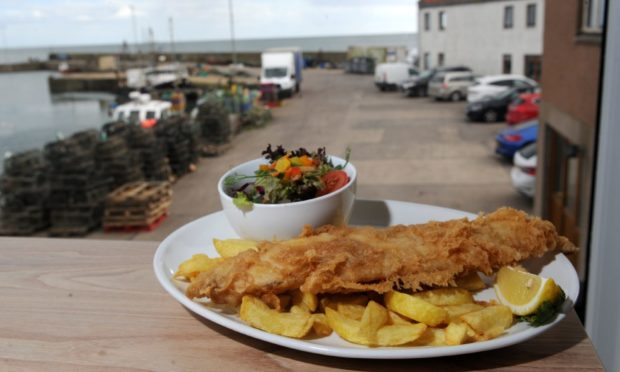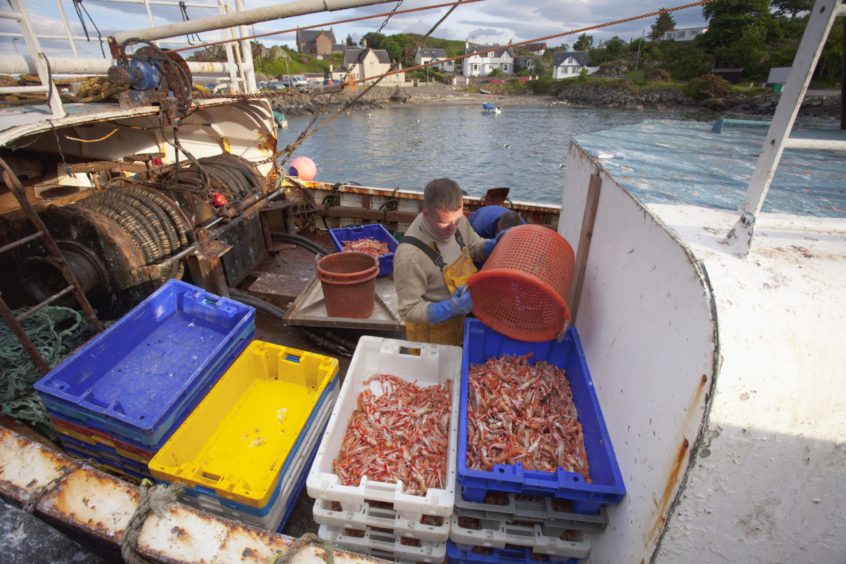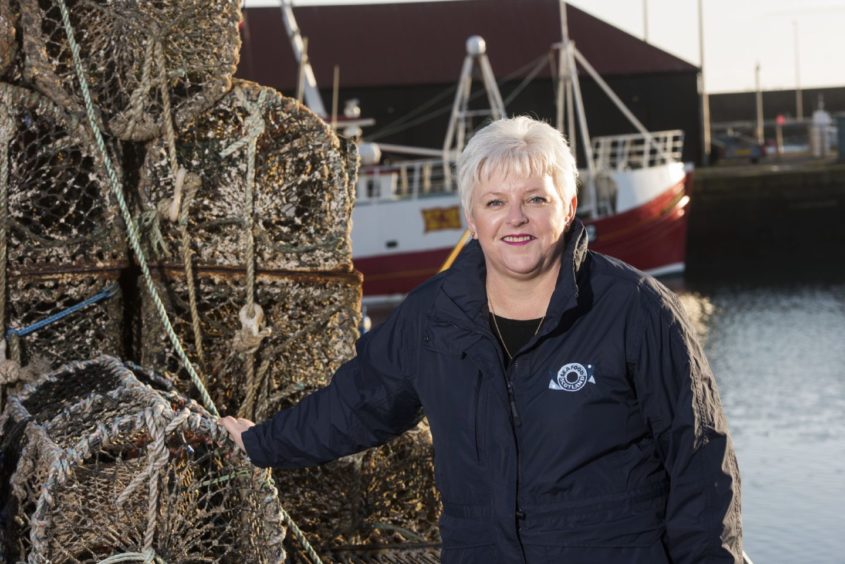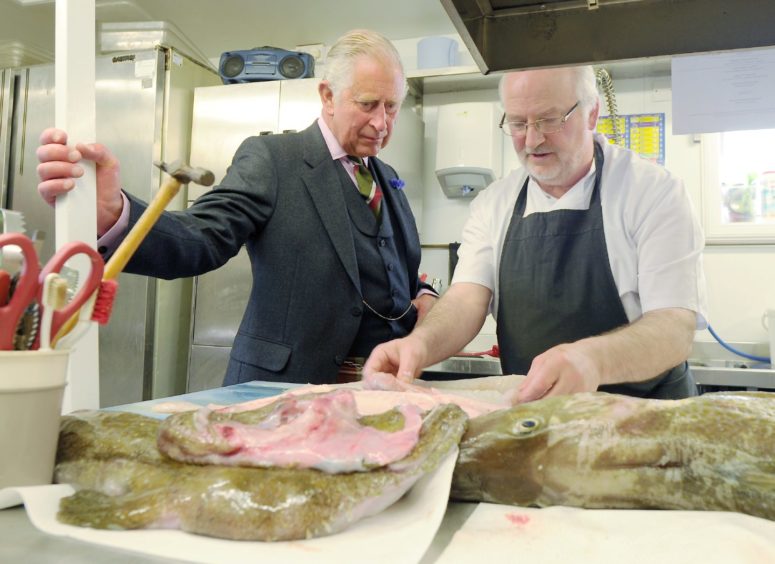What can Scotland’s seafood industry do to stimulate domestic demand now that exporting to Europe has become tougher, asks Peter Ranscombe?
Few experiences match a trip to the seaside, from the smell of the salty air to the sound of the roaring waves and the sight of the rolling seas.
No visit would be complete without the taste of the greasy fried fish from the chip shop either – although the sweetness of ice cream may come a close second.
Yet what can Scotland’s seafood industry do to turn our national obsession with fish and chips into a desire to eat more fish and shellfish during the week, and not just on visits to the coast or as a town-centre Friday night treat?
The chaos caused by the end of the Brexit transition highlighted our reliance on exports – Scotland catches high-quality seafood that commands a high price, which is more likely to be paid by customers in France and Spain than in the home market, creating space for cheaper imports to satisfy demand.
Figures from government agency Marine Scotland showed mackerel was landed the most at Scotland’s harbours in 2019 – followed by haddock, herring, langoustine, and cod – while salmon farm output was higher than the five most-caught species combined.
Langoustine jumped to the table’s top spot in terms of value rather than tonnage – as mackerel, cod, haddock, and monkfish swam behind – with salmon’s value eclipsing even the baby lobsters.
Salmon also leapt to the top of Scotland’s consumption table, followed by warm-water prawns, haddock, tuna, cod, and cold-water prawns, although Seafood Scotland, the industry’s trade and marketing body, warned against drawing comparisons between what’s caught and what’s eaten because of a lack of traceability in the supply chain.
Following January’s heart-aching queues at ports that saw exports slump, Seafood Scotland reported an improvement.
Chief executive Donna Fordyce said: “Progress has definitely been made in some areas – groupage (combined loads), for example, is working much better now, and border control inspections are much smoother.
“The focus now is on delivering fundamental changes to the system to reduce some of the administrative burdens placed on seafood exporters.
“A new end-to-end digital solution has been fast-tracked for testing in June and could be in use by the end of July.”
Ms Fordyce gave the UK Government credit for speeding-up the computerisation of paperwork.
She added: “Costs remain a major obstacle for small and medium-sized companies wishing to continue trading into Europe post-Brexit.
“The Scottish seafood industry has begun reviewing where these costs could be reduced but this is unlikely to have a major impact, given that some export charges – such as vet checks and certification costs – can be the same whether you are exporting 10kg (22lbs) or 22,046lbs).
“That is why there is a disproportionately adverse impact on smaller companies – the planned digital solution will reduce costs but not significantly.”
Get more Scots and other Brits to eat the fish we catch
With those hurdles in place, the need to get Scots and other Brits to eat the fish we catch has become more pressing.
Greg Smith, head of marketing at Seafish, the UK-wide public body that supports the sector, said: “Our new consumer brand – Love Seafood – is an initiative designed to promote general seafood consumption, via attitudinal shifts, over time.
“We’re doing something different, and something no other business or body can do, as we’re representing and promoting seafood in its entirety.”
The Love Seafood campaign is due to last for 20 years, highlighting the long time it could take to stimulate demand, and is targeting the public and the media, both collectively as an industry and with tools to help individual businesses.
Meanwhile, Seafood Scotland is restarting its popular visits for chefs and buyers to fishing ports and fish farms, which were halted due to the pandemic, and is recruiting a “chef ambassador” to promote seafood to their peers.
The organisation also runs a Pride of Plate social media competition for chefs to create and share dishes, and is compiling a “tourism toolkit” to share ideas from other countries about how to stimulate demand.
More needs to be done to make it easier for retailers and foodservice outlets to access local products that are traditionally exported.”
Clare MacDougall, Seafood Scotland’s head of trade marketing for the Middle East, North America and UK
Clare MacDougall, Seafood Scotland’s head of trade marketing for the Middle East, North America and UK, said: “Challenges do remain; more needs to be done to make it easier for retailers and foodservice outlets to access local products that are traditionally exported.”
Lucy Husband, market development and business engagement director at industry body Scotland Food & Drink (SFD), said the seafood sector could learn lessons from other parts of the food industry, including red meat and whisky.
Seafood businesses must raise their ambitions to new level
She said seafood businesses need to set an ambition to focus on the UK, and SFD could help them with market research.
Ms Husband added: “They then need to look at if they have the right infrastructure to supply the UK market and, if they don’t, then we can help them with the SFD Academy, which supports businesses from a commercial perspective.
“The seafood sector in the past hasn’t connected into these programmes, but we have a real opportunity to build the capability and infrastructure of the seafood sector to allow them to trade in a profitable way in the UK.”
With support available from the Covid-19 food and drink recovery fund, she urged companies that want more details to contact her directly.
Serving Scotland’s lesser-known species has been at the heart of Jim Cowie’s work at the Captain’s Galley, the restaurant he opened at Scrabster harbour in 2002, now with an accompanying seafood bar outside.
He wants to see businesses, their associations, and governments all pulling in the same direction to promote seafood – and suggested moving the start of the quota management year from January to May to better match the spawning cycle of fish and give stocks more time to recover, a technique already used in Iceland.
Consumers need to broaden horizons on fish they eat
Mr Cowie said: “We need to broaden what we eat – more than just cod in England and haddock in Scotland for fish and chips.
“The continent knows the value of our ling and our tusk and our saithe.
“I practice what I preach – we’ve had menus with 15 or 20 different types of seafood.”
He added: “There are good people in the industry and they’re developing the local market – guys like Jimmy Buchan with his Amity Fish Company are doing postal and van deliveries, and Michael Watt from Sardonyx, and up here we have Scrabster Seafoods and Bell’s Seafood doing similar things.”




